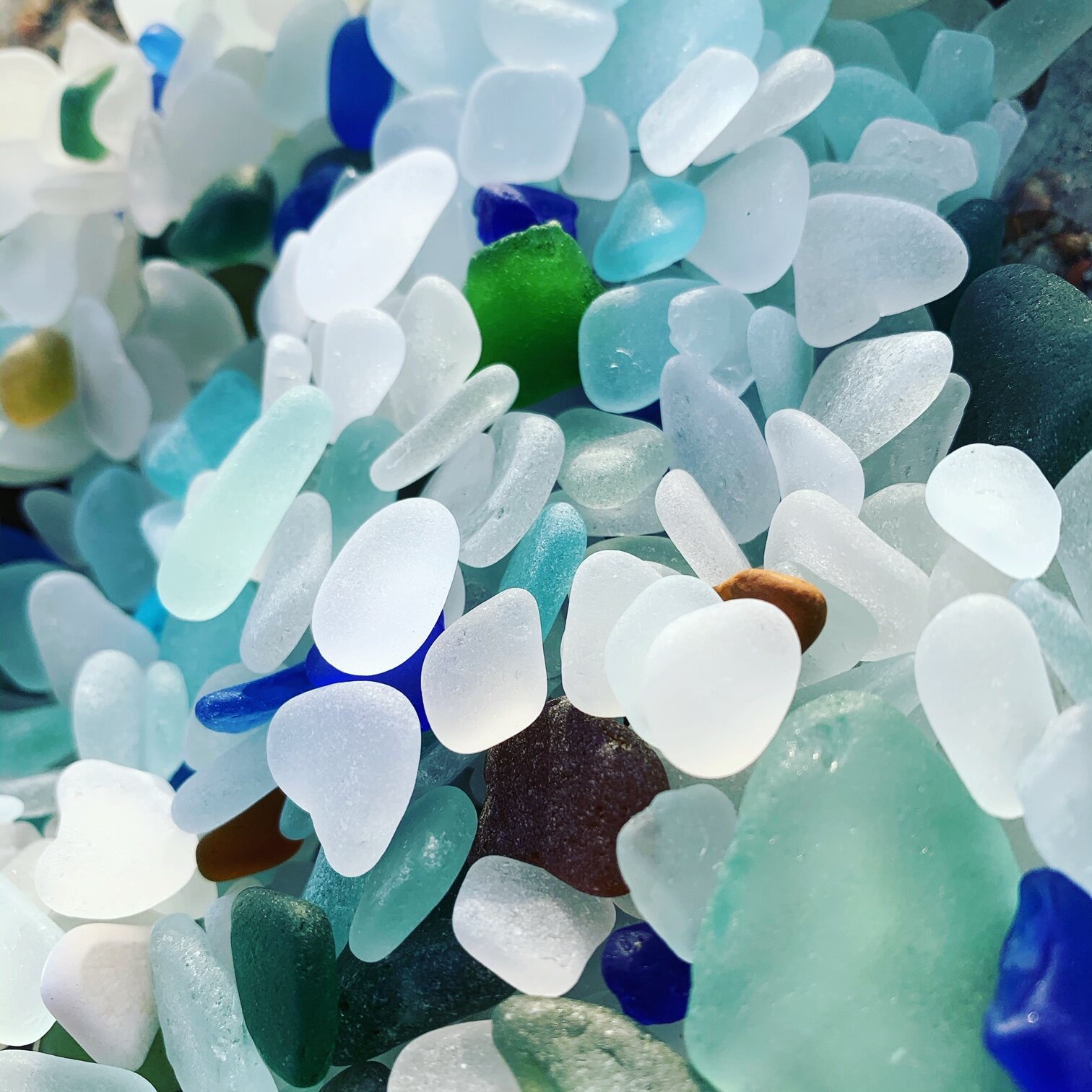
What is sea glass?

One of my favourite colours to find on the beach is ‘aqua marine’ or ‘sea foam’ sea glass as it’s also called. The Victorians drank soda water from torpedo bottles and the pieces I find are most likely broken soda bottles. You can tell from the thickness of the glass, the pieces can be quite large and also the shade of colour.
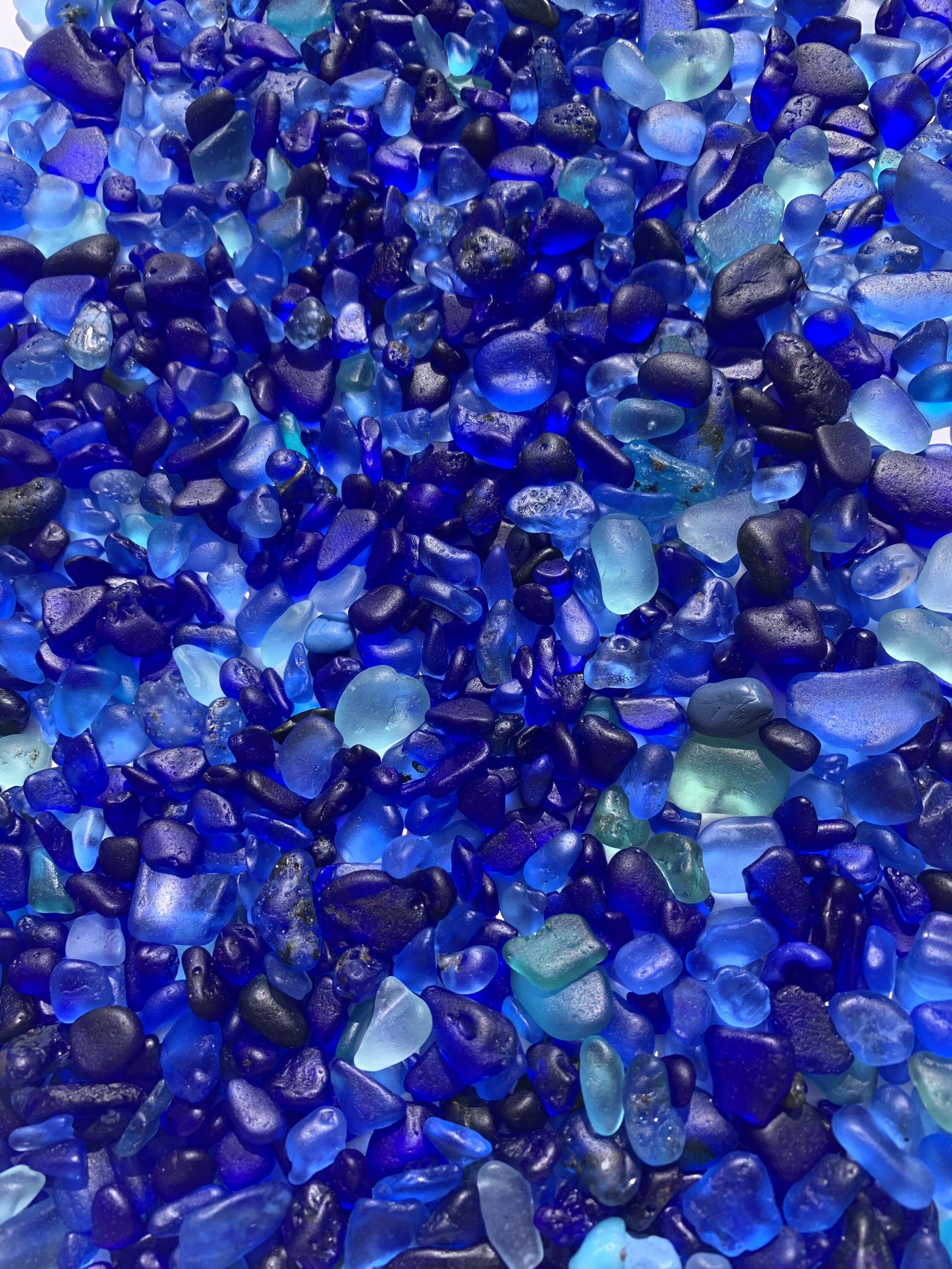
Another one of my favourite are these gorgeous ‘cobalt and baby blues’. The pieces are find are really small, much smaller than the aqua pieces as the Victorian medicine bottles were made from much thinner glass bottles. It’s really rare for me to find a huge piece, although I have found some!

I absolutely love ‘bonfire sea glass’. Bonfire sea glass is a mixture of two colours, typically white and blue, white and green, white and brown but you can find all colours mixed together. It’s when at some point there has either been a bonfire on the beach and two glass colours have fused or the sea glass was mixed at source (at a glass making factory) before being dumped into the sea as unused glass at the end of the manufacturing day.
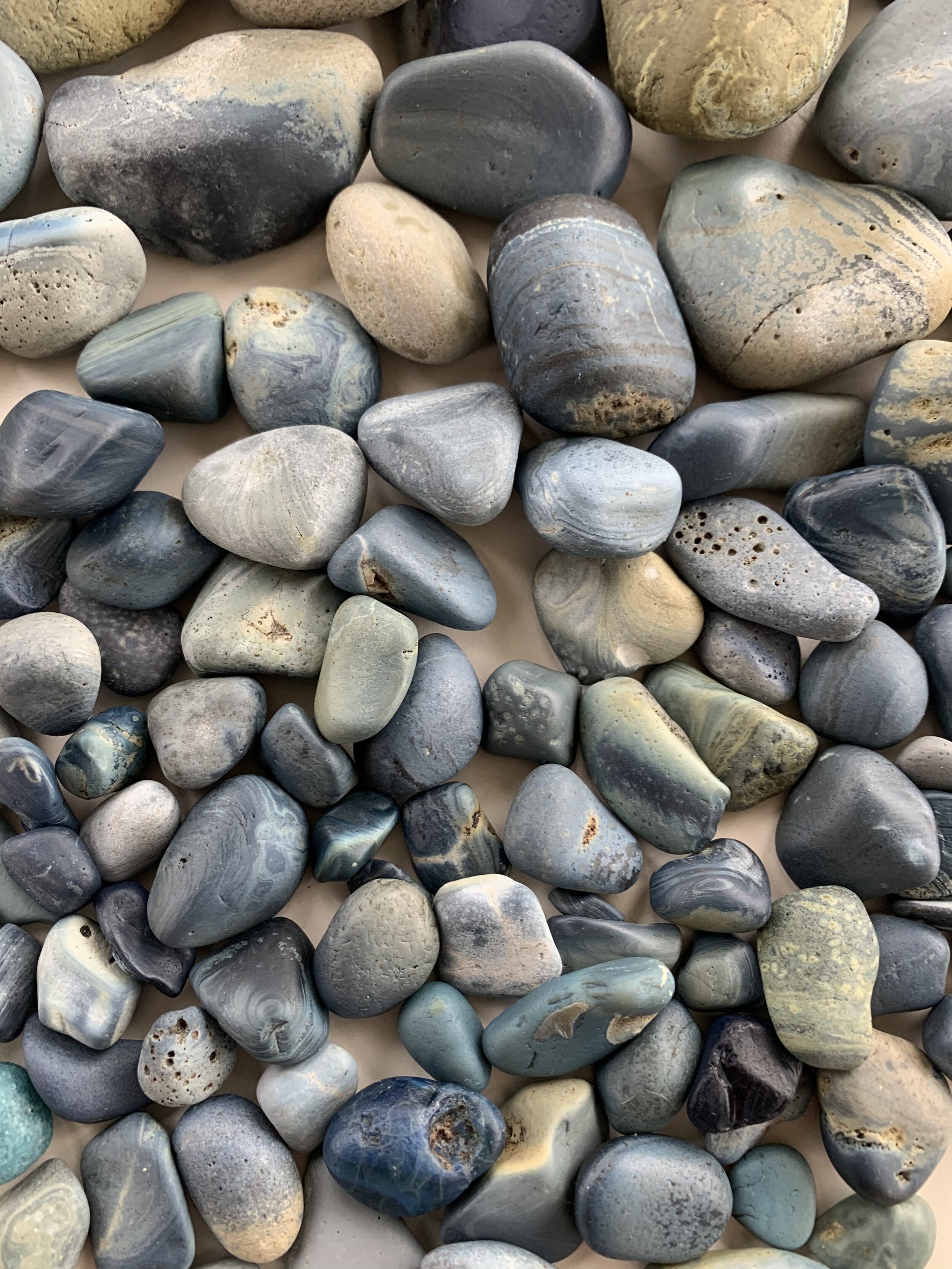
‘Galaxy sea glass pebbles’. This glorious pieces with multiple swirls look like pebbles, but they’re not stones they are actually pieces of glass from the manufacturing process of glass manufacture. Very easy to over look on the beach.
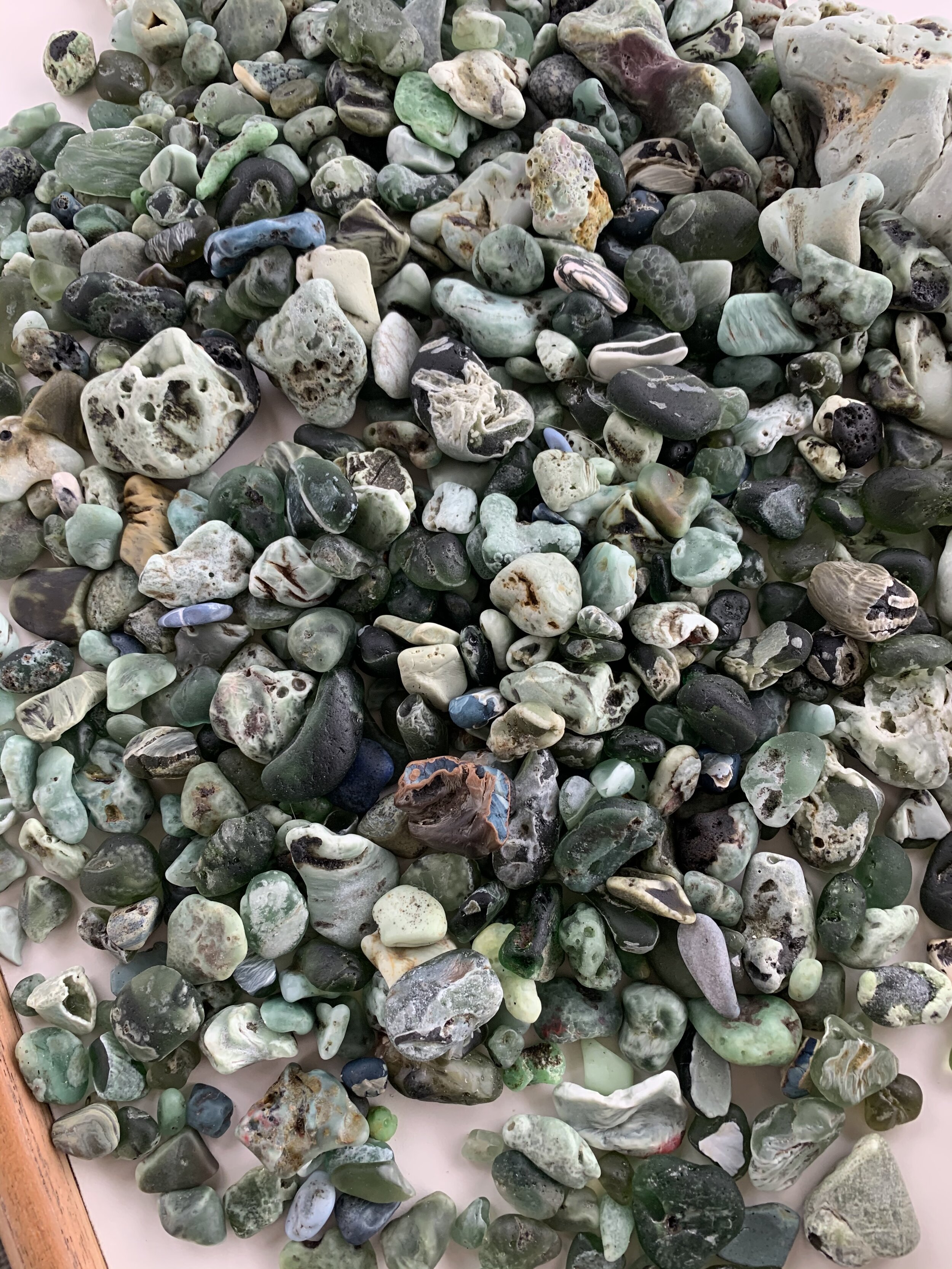
This is ‘sea glass slag’ and is produced again during the manufacturing process of glass. It’s so unique and gnarled and even though no perfect in shape these pieces are just so beautiful for their simple imperfections. This slag is in greens and blues, I’ve never found any brown pieces of slag. The pieces of slag which are very matt and opaque are called ‘crystalline sea glass’.
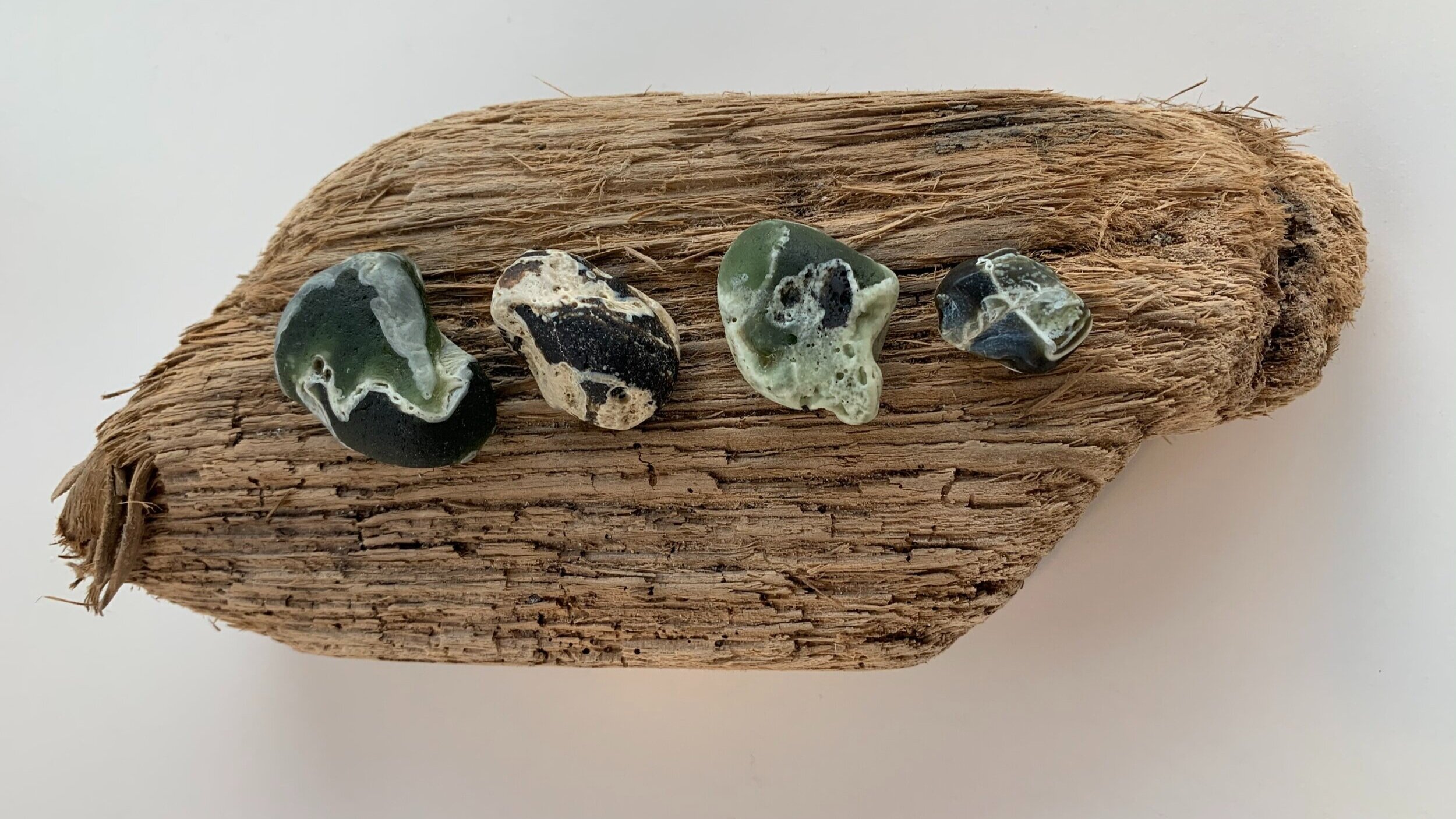
These pieces are Dragon Eggs. Slag glass is made by adding slag—the waste matter separated from metals during the smelting of ore—and mixing it with molten glass to create colourful streaks in the glass. ... These are referred to as "Dragon Eggs," and "Dragon Glass.
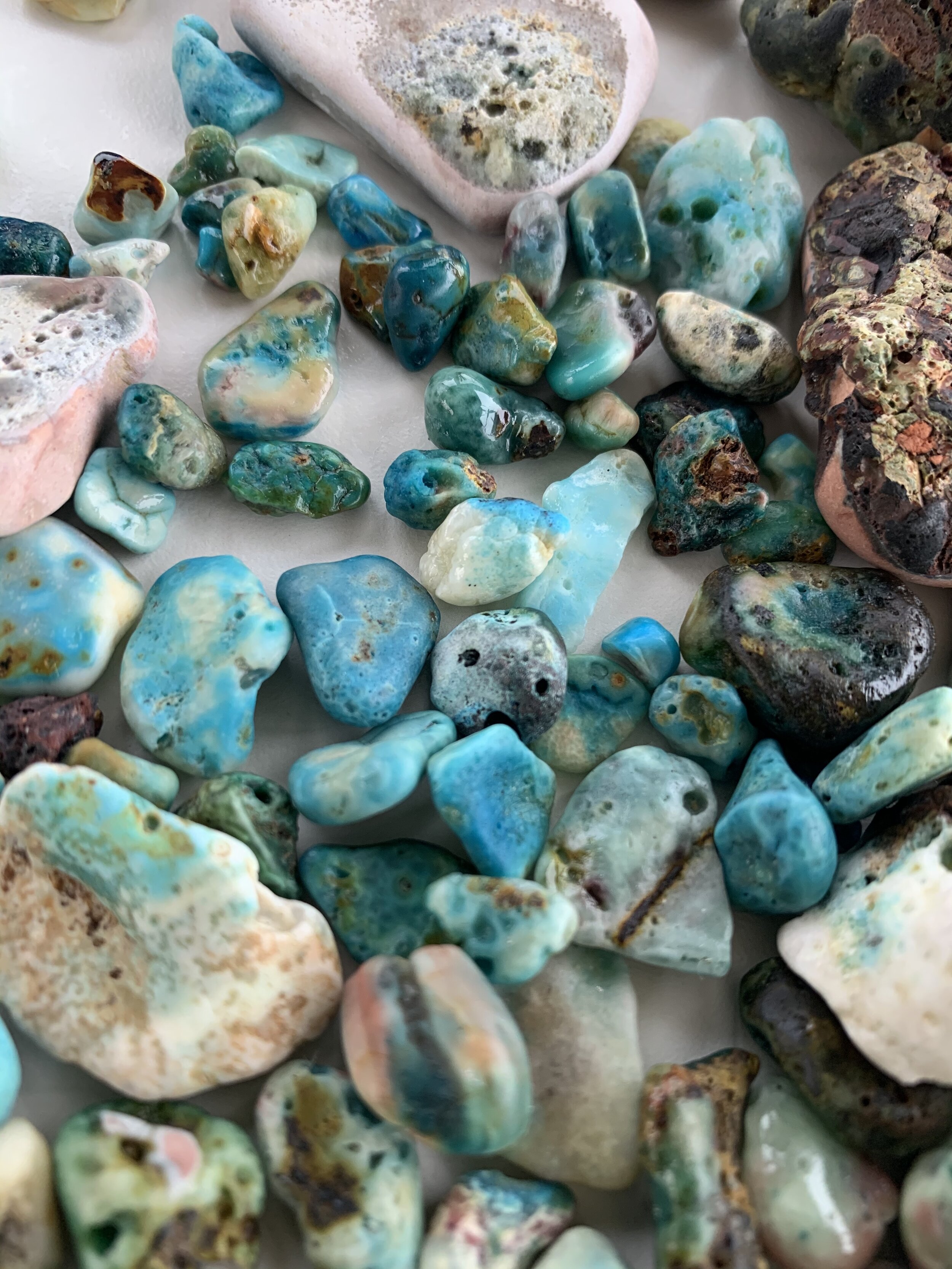
True gems that I’ve found on the beach, these pieces are ‘turquoise slag’ and used in the smelting process of glass manufacture. Glorious colours, very rare to find but such a joy to find a piece.
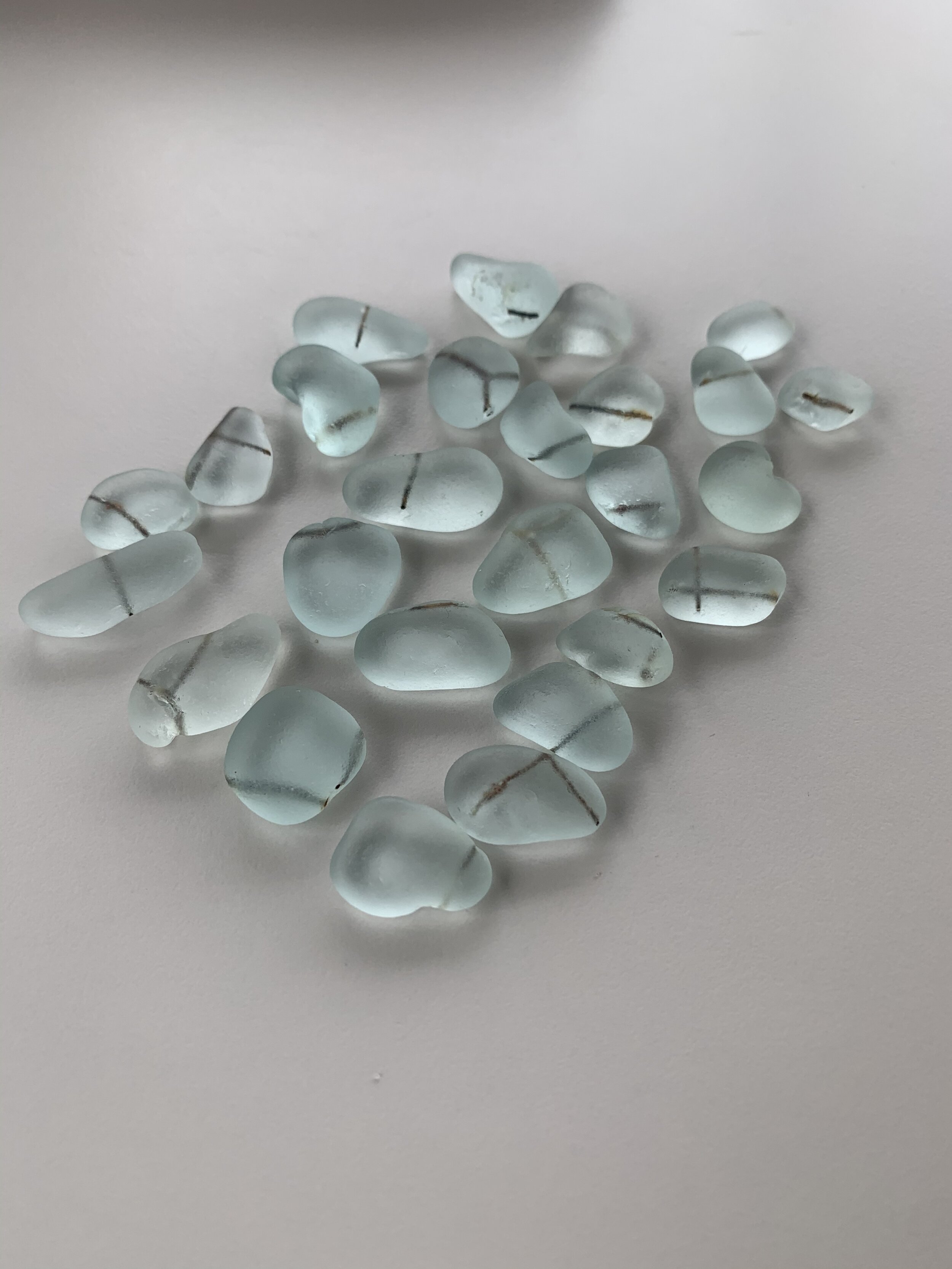
These little gems of aqua sea glass have gorgeous lines which run through the glass. This is ‘re-enforced glass’ and is quirky and unusual.
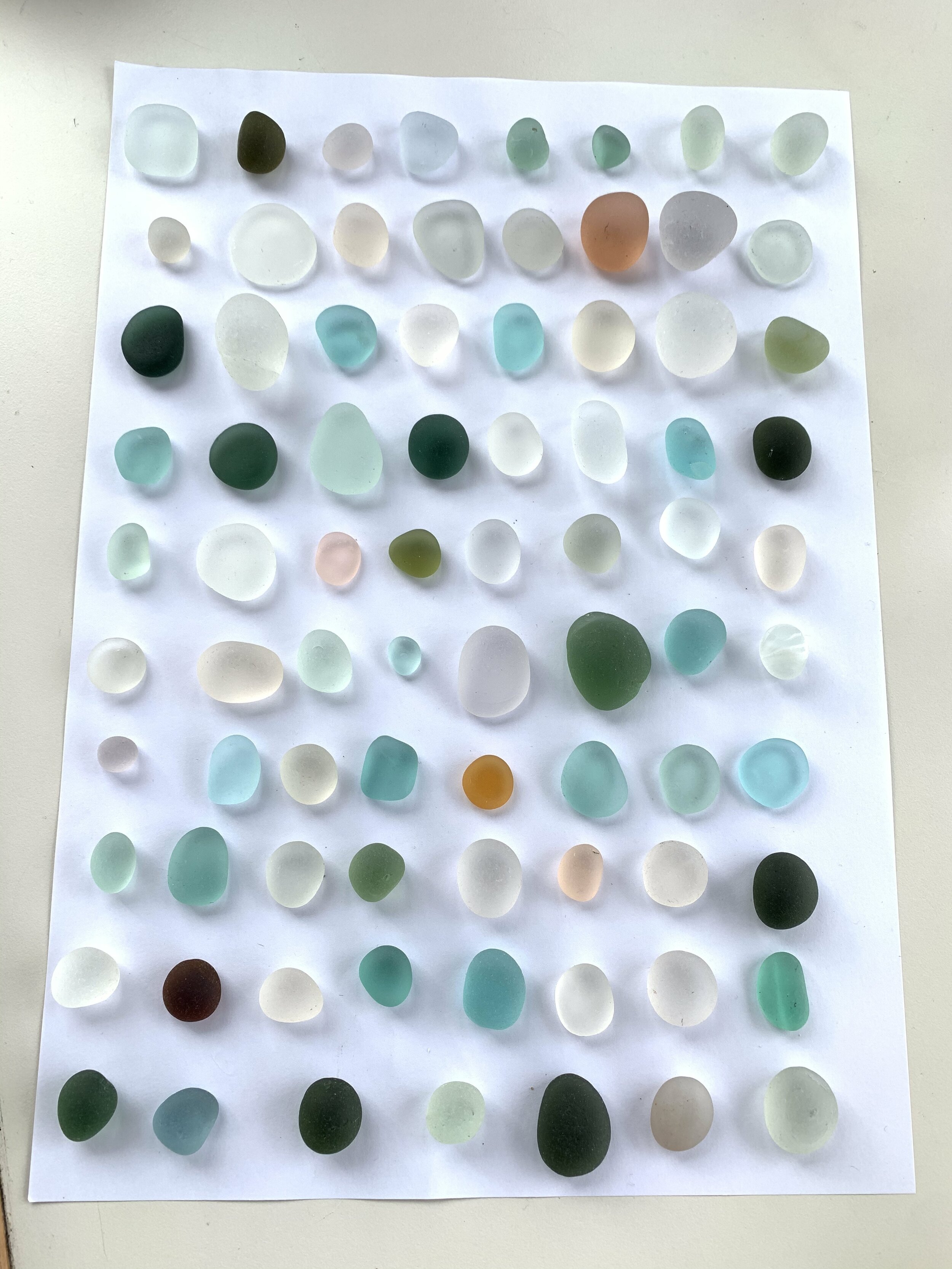
These gorgeous pieces of sea glass are referred to as ‘sea glass bubbles’. These are nearly perfectly round pieces of sea glass that have tumbled into beautiful round pieces as per the name looking exactly like a bubble!
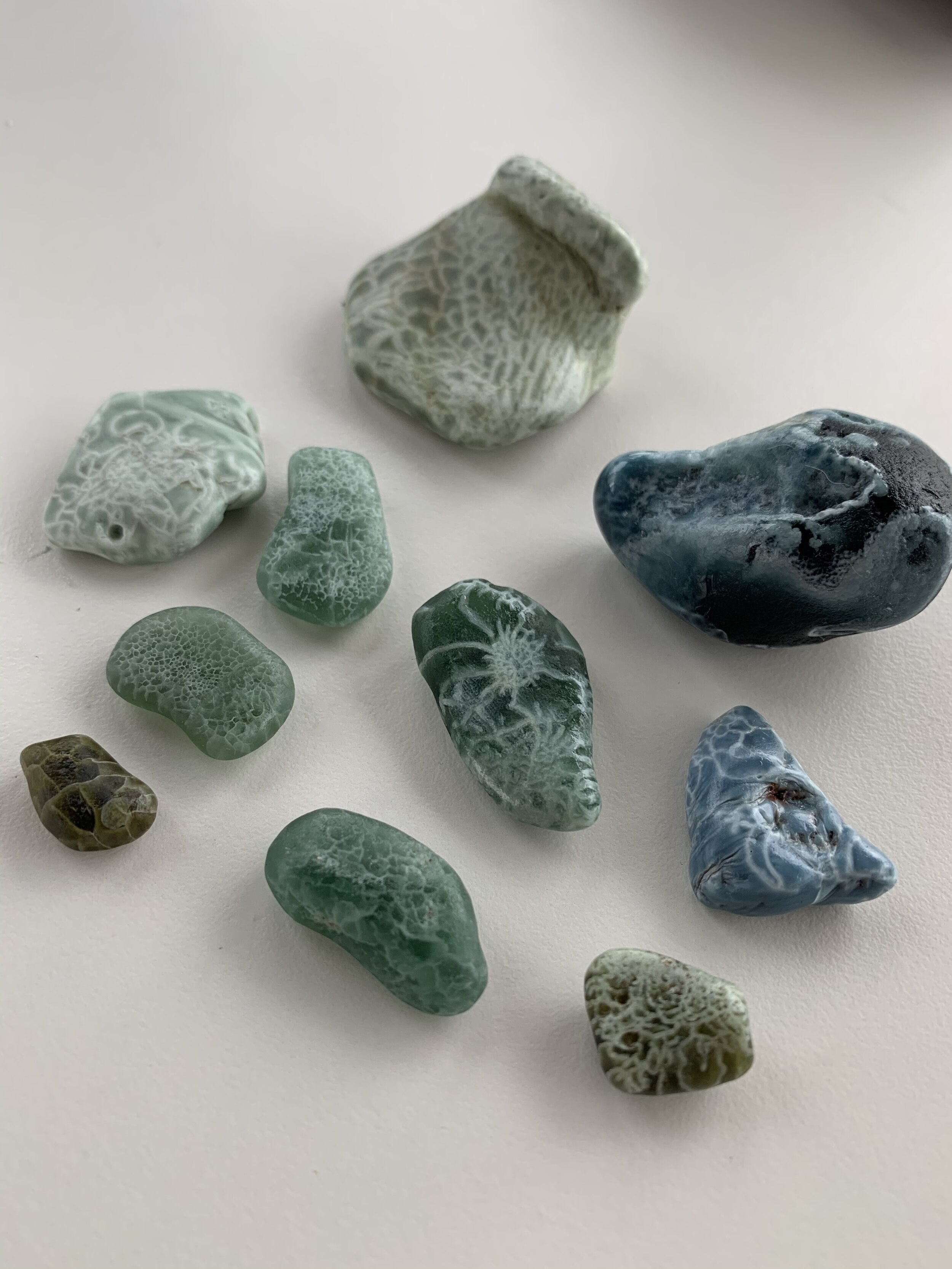
These glorious pieces are referred to as ‘crackled’ sea glass. These beautiful spiderweb and snake scaled patterns are created when glass has been cooled down too quickly, creating these unique and rare pieces of sea glass.
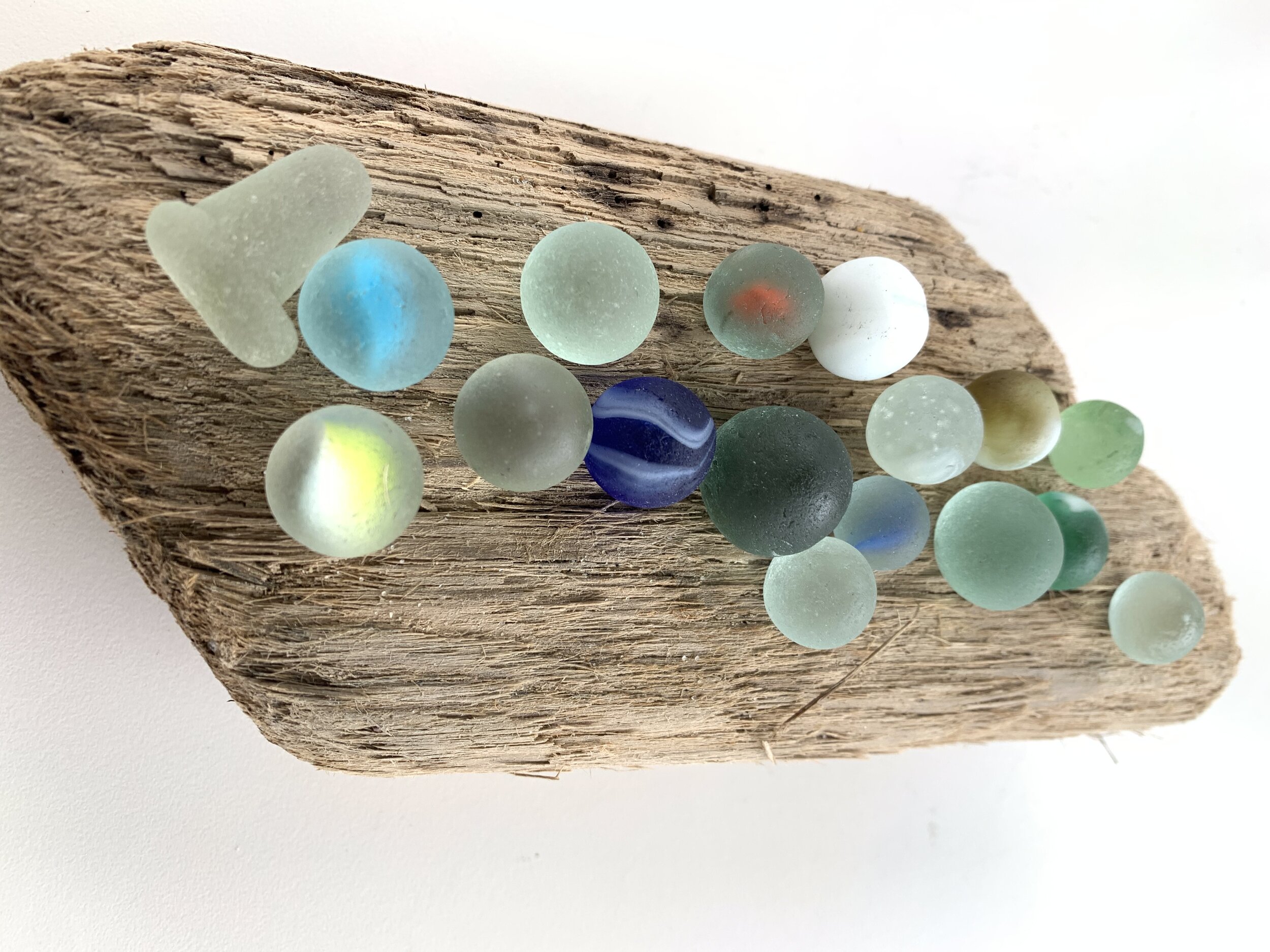
Sea glass marbles are such a treat to find! These will be a mixture of lost marbles from children playing at the beach to falling out of pockets in the sand. The aqua plain marbles are called ‘cobb marbles’ and these were inside the Victorian soda bottles to keep the soda fizzy.
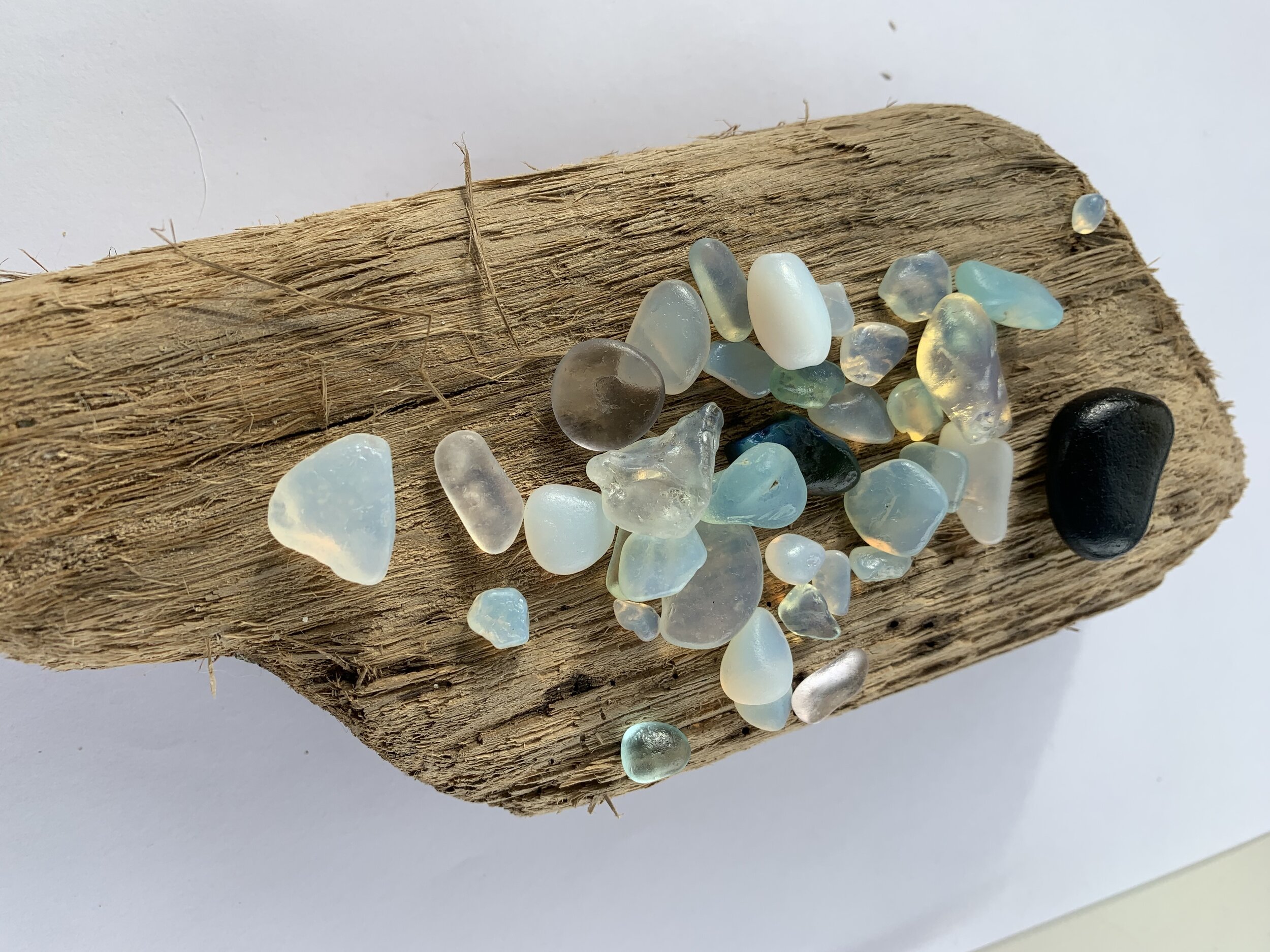
These very rare pieces of sea glass are called ‘opaline’ sea glass. They have a glorious yellow and blue hue, some pieces are green with a blue hue. Truly stunning and similar to opals. Opaline glass is also a decorative style of glass made in France from 1800 to the 1890s, though it reached its peak of popularity during the reign of Napoleon III in the 1850s and 1860s. As I’m finding my sea glass on the Kent coast, this could be opaline glass from France as we’re so close to France! Many different pieces were produced in opaline glass, including vases, bowls, cups, coupes, decanters, perfume bottles, boxes, clocks and other implements.
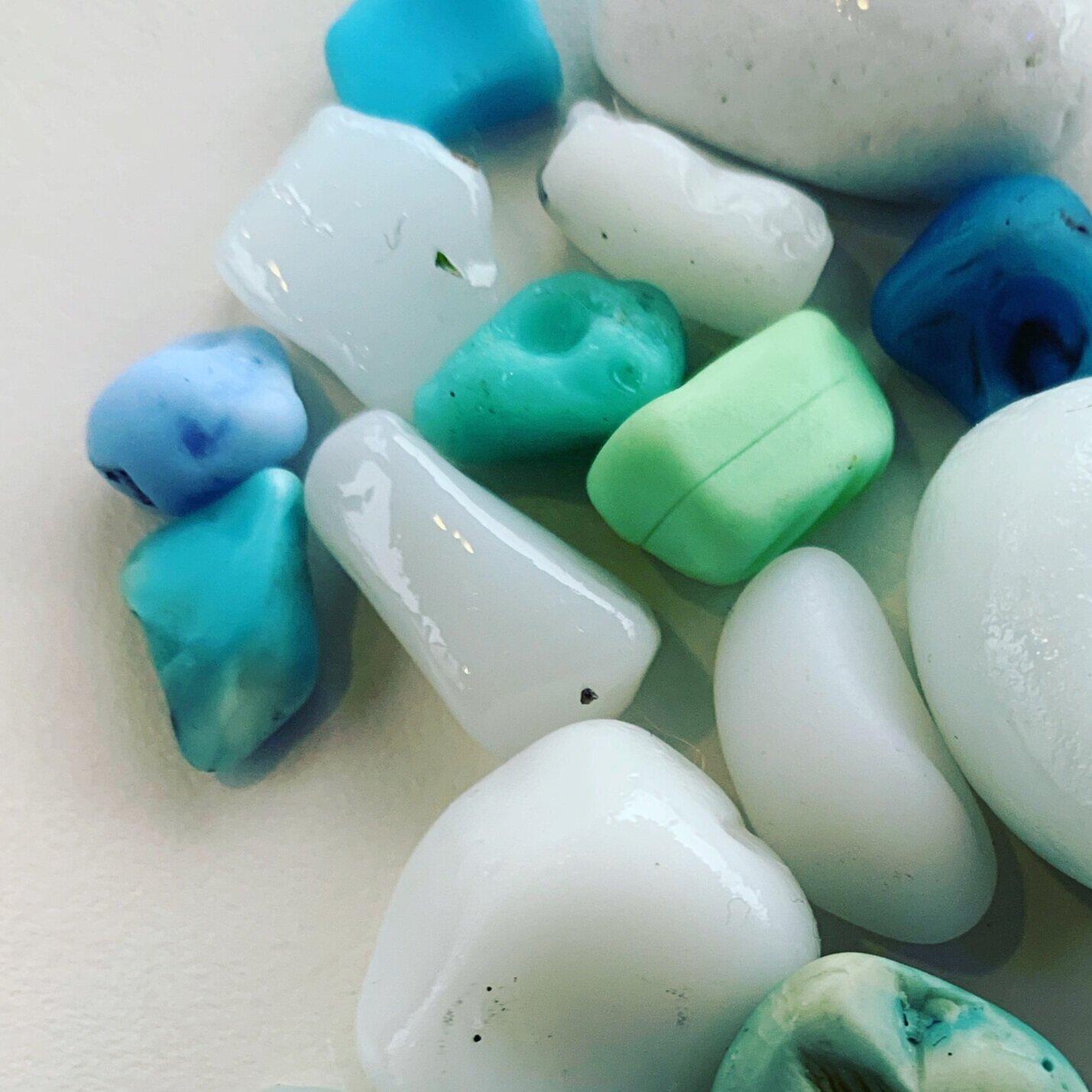
These very rare pieces of sea glass are called ‘milk glass’. Milk glass is a term that was originally used to describe opaque white glassware. It has since become used to include several colours of opaque and translucent glass, including white, blue, green, pink, black, yellow and brown. The origins of Milk glass begin in Venice in the 16th Century, when it was then known as "Opal" glass.
Milk glass is also known as vitro-porcelain glass.

These gorgeous little finds are called ‘pirate’ sea glass. They look black but when you shine light (a torch or the torch on your Iphone is great to use) through the glass it turns bright green, brown or dark green. Tricky to find as they just look like black stones!
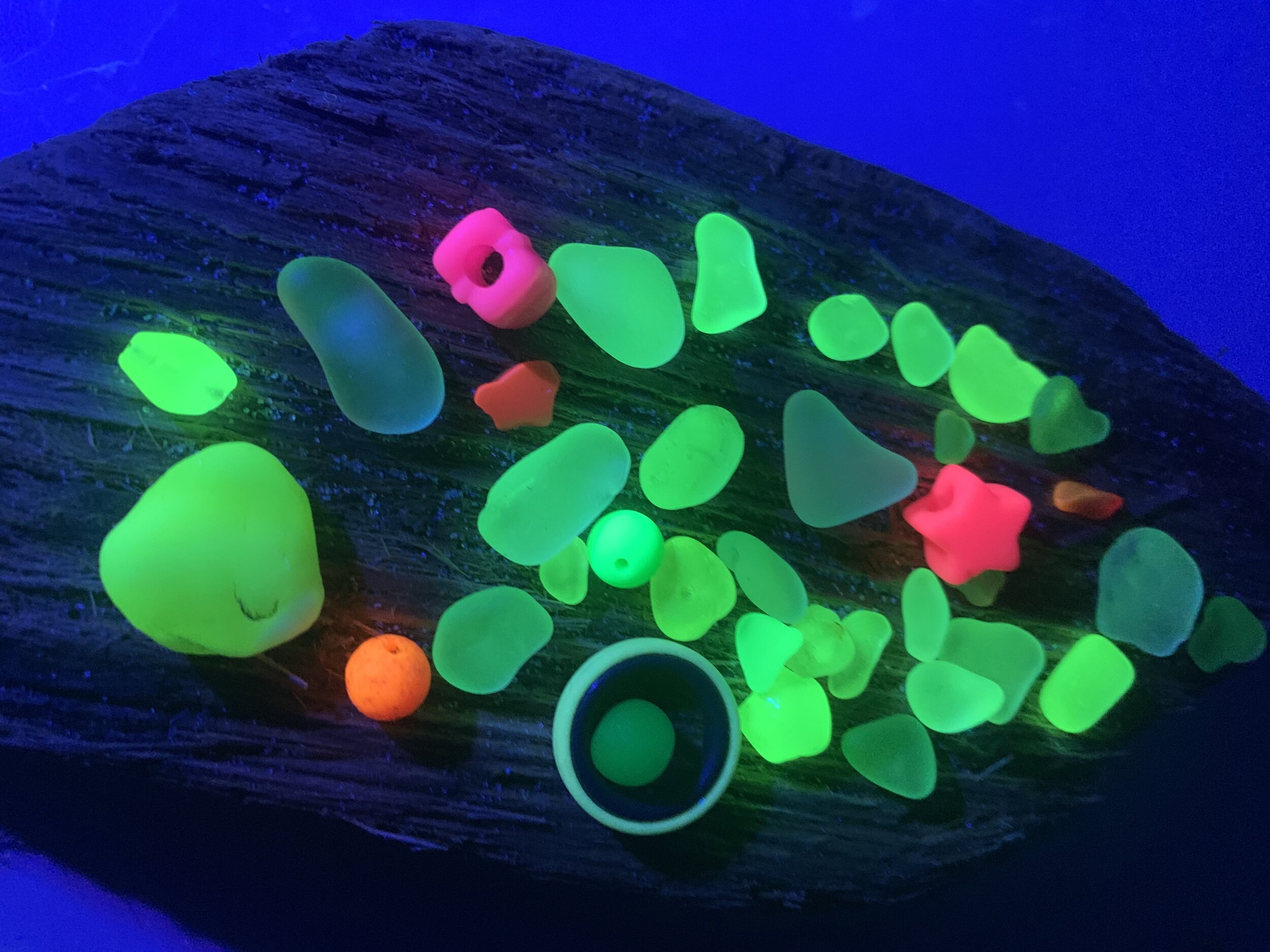
‘UV sea glass’. These pieces are truly hard to spot whilst beach combing in the day time. It’s only once it’s dark or I’m back home with a UV torch can I look at my daily finds and see if within the treasure if there are more pieces of UV treasure within my finds. The UV is there as uranium is added to the glass and will most likely have been pieces of jewellery.

FAKE “SEA GLASS” NOT GENUINE. There are companies in China and in Germany who mass produced man made glass pieces in giant tumblers, they falsely claim their glass as ‘sea glass’ which is misleading as their glass has never seen a beach nor been in the sea! You can clearly tell the difference between man tumbled glass as it doesn’t have the ‘saltiness’ that genuine sea glass has and sellers will often sell in batches of very specific sizes. This is because they smelt the glass to the colour they want to sell (greys, bright oranges, yellows, reds, bright blues) then cut the glass to specific sizes before putting the pieces into tumblers. Of course these pieces are also very beautiful in colour but they are not ‘sea glass and should not be sold as sea glass’. Buyers beware!